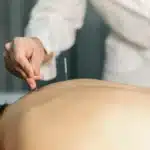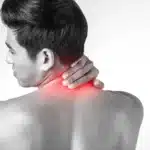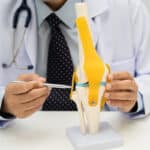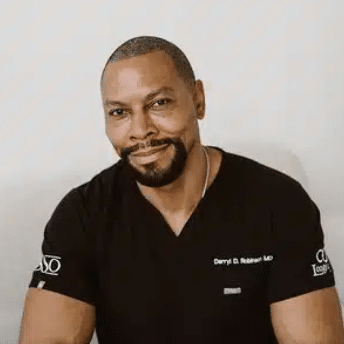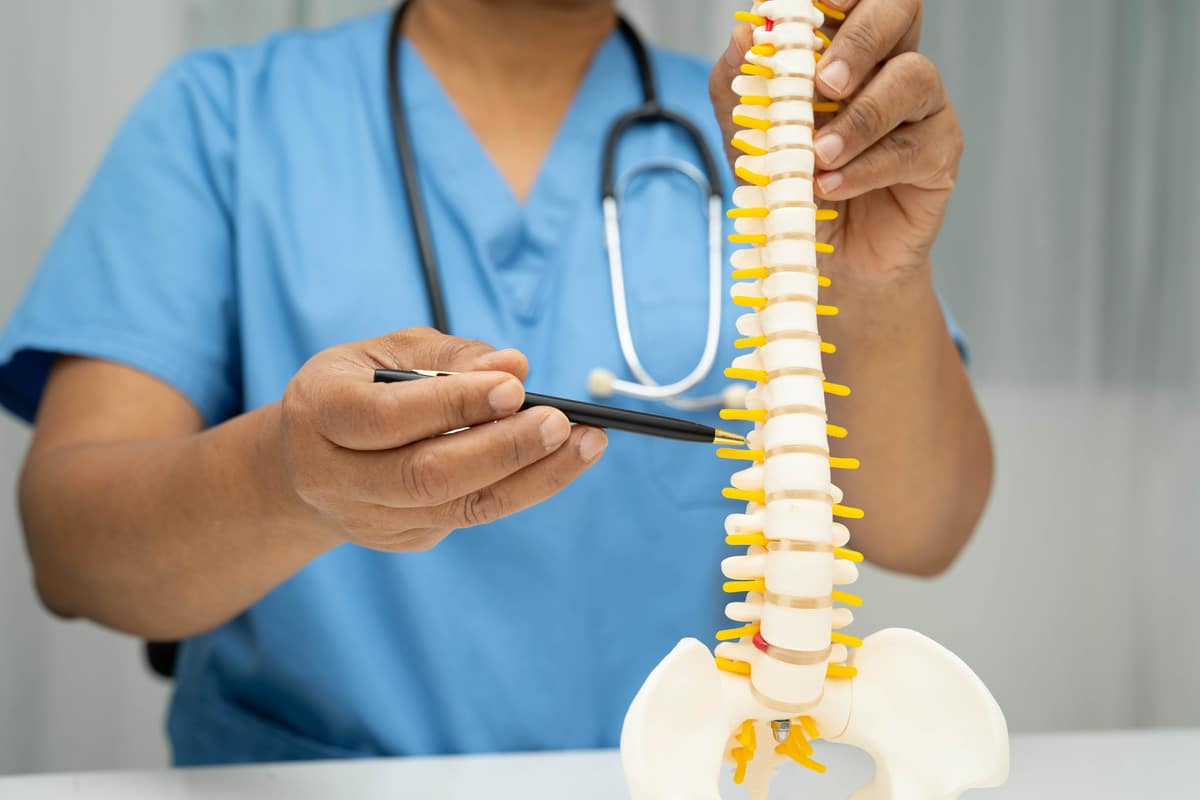
Disks are cushions between the bones, also known as vertebrae, that make up the spine. The outer layer (annulus) of a disk is made of tough cartilage that surrounds a jelly-like core known as the nucleus pulposus. Around eighty percent of the nucleus is made of water, while the remainder is composed of collagen fibers. Disks act as shock absorbers for the spine. When a disk is damaged, it’s likely to impact the nerves around the spine and can cause irritation, pain, and inflammation. Both bulging disks and herniated disks can result in pain and inflammation. However, they are separate conditions with important differences.
What is a Bulging Disk?
A bulging disk is a spine condition in which a disk expands, losing its original shape. The nucleus expands, placing pressure on the outer layer of the disk and on the spinal canal, which can pinch a nerve.
What is a Herniated Disk?
In a herniated disk, the soft nucleus expands and leaks out through a tear in the annulus. Since there is limited space in the spinal canal, a herniated disk can pinch a nerve and cause pain.
What Does Pain Caused by a Herniated or Bulging Disk Feel Like?
Depending on where the bulging or herniated disk is located, both conditions tend to have similar symptoms. You may experience neck and back pain, as well as tingling, numbness, and weakness in your arms, hands, legs, and feet. In some cases, these conditions only cause pain on one side of the body. For example, you may experience sharp pain in only one leg and hip, along with numbness in the other parts of the body. When you move your neck, you may experience pain near the shoulder blades.
Differences Between Bulging and Herniated Disks
Although a bulging disk and a herniated disk are similar conditions that are often referred to interchangeably, there are some key differences, including:
Disk Structure
In a bulging disk, the nucleus is contained within the annulus and expands without causing any ruptures or tears. In other words, the disk remains intact, and the nucleus does not leak out. However, in a herniated disk, the nucleus breaks through the annulus and leaks into the spinal canal through a tear or rupture.
Severity of the Condition
Although a bulging disk does not tear or rupture, the condition can cause pain because the disk loses its original shape. A herniated disk will likely cause more intense pain, inflammation, and loss of mobility.
Prognosis and Recovery
The recovery time for herniated and bulging disks ranges from 2 to 6 weeks. However, it will also depend on the patient’s condition and age. If recommended by a healthcare professional, patients should follow the appropriate course of medication and therapy.
Symptoms of Bulging vs. Herniated Disks
The symptoms of a bulging disk are:
- Tingling or pain in the fingers, hands, arms, neck, or shoulders if the disk is in the cervical region
- Pain in the upper back leading to the stomach or chest if the disk is in the thoracic region
- Pain in the feet, thighs, lower spine, and buttocks if the disk is in the lumbar region
- Difficulty walking
- Difficulty lifting or holding things
- Incontinence if the disk compresses the nerves that control the bladder
- Sensations in one leg and not the other if the sciatic nerve is affected
The symptoms of a herniated disk are:
- Pain on one side of the body
- Sharp pain in one part of the leg and hip
- Pain or numbness in the calf
- Pain or numbness in the sole of the foot
- Numbness in certain body parts
- Pain when moving your neck
- Pain near the shoulder blades
- Pain that travels through the upper arm, forearm, and fingers
- Numbness along the shoulder, elbow, forearm, and fingers
Depending on the severity of the condition, symptoms of a bulging disk can range from mild tingling and numbness to moderate or severe pain. In some cases, if the disk has only bulged and not herniated, you may not feel any pain at all. Herniated disks are more likely to cause pain.
Causes of Bulging and Herniated Disks
Herniated and bulging disks are mostly caused by aging. As people age, they experience gradual wear and tear in their spine. The disks become less flexible and more prone to rupturing and tearing after a minor strain or twist. However, a traumatic event, such as a fall, an accident, or a blow to the back, can also cause bulging or herniated disks.
The following people are more likely to experience a herniated or bulging disk:
- People who have led a sedentary lifestyle
- Smokers
- Routine heavy lifters
- People with weak back muscles
- People who have experienced trauma or injury to the spine
- People who sleep, sit, stand, or exercise with bad posture
- Obese individuals
- High-contact athletes
- Runners who don’t use shoes with orthopedic support
Diagnosing Bulging and Herniated Disks
A physical examination is always the first step in diagnosing a bulging or herniated disk. Dr. Robinson may check your muscle reflexes, muscle strength, and posture. Both herniated and bulging disks can also be diagnosed through imaging tests, such as X-rays, MRIs, and CT scans.
Treatment for Bulging vs. Herniated Disks
Both bulging and herniated disks can become life-threatening if not treated properly and in a timely manner. However, with the correct treatment, patients can easily make a full recovery.
Treatment Options for a Bulging Disk
There are many non-surgical treatment options for a bulging disk, such as:
- Medications, including NSAIDS, prescription medication, and muscle relaxants
- Physical therapy, including exercises and stretches prescribed to minimize pain and relieve pressure on any affected nerves
- Chiropractic care, including spinal manipulation and massage
- Heat and cold therapy
- Limited bed rest and short walks
- Supportive devices and braces for compression and stability
- Oral steroids to help reduce swelling and inflammation
- Cortisone injections for prolonged pain relief
- Spinal decompression therapy
- Electrotherapy
- Alternative medicine, including acupuncture, yoga, Reiki, and moxibustion
Treatment Options for a Herniated Disk
There are many non-surgical treatment options for a herniated disk, including:
- OTC pain medications, such as ibuprofen, acetaminophen, and naproxen sodium
- Neuropathic drugs, such as gabapentin, pregabalin, duloxetine, and venlafaxine
- Muscle relaxants
- Short-term use of opioids, such as codeine or an oxycodone-acetaminophen combination
- Cortisone injections
- Physical therapy
A healthcare professional can recommend the right treatment option after reviewing your medical history, diagnosing your condition, and considering other underlying factors. You should not try any treatments on your own without a doctor’s approval.
Conclusion
Bulging and herniated disks are serious conditions. Although most people don’t require surgery and are able to recover within 12 weeks or less, it’s important to maintain a consistent treatment regimen and check in with a doctor regularly. Neglecting these conditions can lead to lifelong complications, even if you are not experiencing severe pain. If you are experiencing symptoms of a bulging or herniated disk, we recommend you consult Dr. Robinson at Oklahoma Spine and Pain Management. Our experienced team of healthcare professionals will diagnose and treat your condition effectively to help you get back to a normal, healthy routine. Make an appointment today!


